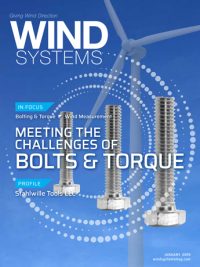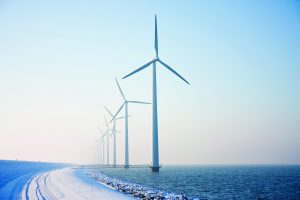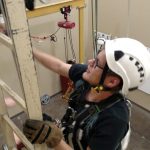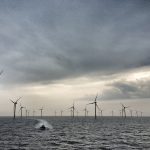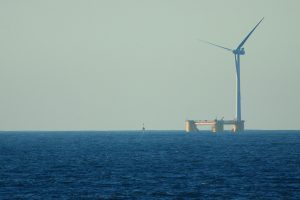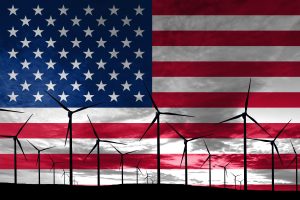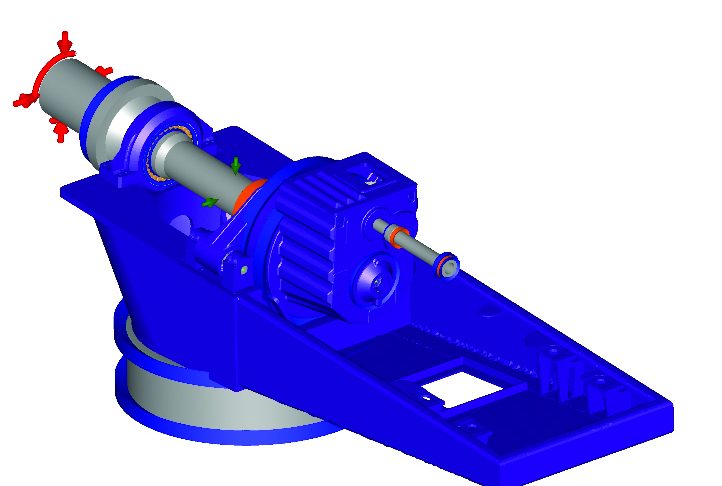In a highly forested area of Sweden, the landscape is studded by wind turbines whose stately blades are slowly turning under the watchful eye of what appears to be an electronic sheep.
This is the light detecting and ranging (Lidar) device from Wood. It is helping the owners of this particular wind farm to better understand the performance of both individual turbines and the overall estate. And it is making it possible to increase energy yield, improve ROI, and deliver more clean energy for distribution throughout the country.
When reality meets design
Wind turbines are now a familiar site throughout much of Europe and North America. But many are not performing at the level predicted or delivering the output required. At the wind farm in Sweden, turbines capable of delivering 3.45 MW were curtailed to 3.3 MW: a number that looks small on paper, but has a major cumulative effect.
This is not an isolated case. Over many years of analyzing wind-farm performance, it is clear that designers, operators, land-owners, investors, and insurers have a number of competing incentives — and these result in necessary trade-offs and compromises. It is an endemic issue. And it means that wind-farm performance is rarely what was initially predicted.
Naturally, this is a significant challenge. Around the world, the production of wind energy, currently one of the most commercially viable alternatives to fossil fuels, is not yet reaching its potential.
Rethinking the status quo
Traditional methods for assessing and analyzing wind behavior prior to installing turbines have been based on point measurements. Monitors attached to individual masts gather highly localized data, which is then modeled to give an estimate on what is happening in a wider wind-farm area. Developers and operators use this extrapolated information as the basis of wind-farm development.

The Optimizer service from Wood can change that. The electronic sheep is in fact a host for advanced Lidar technology. It is placed at an optimal location and left for three- to six-month periods to capture wind behavior across a spectrum of conditions. The use of lasers to measure airflow enables it to evaluate a much greater volume of wind flow across a much larger area — up to a radius of four kilometers. That information can then be correlated with actual wind-farm performance.
As a result, when Wood’s experts perform their robust analysis and assessment of wind performance for a customer, they are using a much more detailed and accurate data set. Combined with data from turbines and subjected to standard modeling such as computational flow dynamics as well as Wood’s proprietary advanced analytical models, it delivers the insight necessary to extract greater performance from wind-farm assets.
Initially deployed to help predict performance, Optimizer is now widely used to identify and validate production improvements as well.
The Optimizer service looks at the facility in its entirety, and allows Wood to factor in adjustments to individual turbines, the relationships between them, and the effect of the surrounding landscape. For example, forestry has a significant impact on wind flow even above the tops of trees or when it is several kilometers away.
When the Lidar data is combined with long-term SCADA data on turbine output, direction, and rotational speed, what is going on can be properly understood and the best opportunities for improvement can be quickly targeted. Adding remedial solutions to predictive capabilities was therefore a logical step.
Delivering improvements
Back in Sweden, the Optimizer technology has already delivered improvements worth approximately $25 million. It showed that the forests were disrupting airflow, as expected. But it also showed how best to reduce turbulence intensity, and how to maximize energy output while remaining commercially and environmentally acceptable to the landowners.
Instead of chopping down trees unnecessarily, Wood’s specialists were able to suggest smarter, more targeted felling plans.
Wood worked with the local authorities and targeted only the tallest trees, most of which were just 10 to 15 years away from planned felling anyway. The company then replanted to modern forestry and environmental standards, which helps maintain biodiversity and allowed landowners to keep up their crop extraction rate — all while optimizing wind-flow for the turbines.

Wood is now managing the forestry restructuring activity on behalf of the operators.
But this is not the only source of the savings that have been delivered. The analytical work that Wood carries out also enables the operator to extend the life of its existing turbines. With so many turbines around the world getting close to the halfway point of their predicted lifespan, this is a pressing concern for many operators.
In many cases, turbines can be extended beyond their planned lifetime, but it requires detailed engineering and analysis. Component wear rates are affected by wind characteristics, so it’s important to establish appropriate monitoring and inspection regimes, along with replacing and refurbishing life-limited components in a practical manner. It needs really accurate information to get that balance right.
Fortunately, Wood’s wind team is able to draw on the experience of colleagues in the oil and gas industry, who have been addressing similar problems for the past decade. Those colleagues are also working with Wood’s wind specialists to share information on fatigue behaviors, such as how cracks form and propagate in metal structures, and the best processes to use when monitoring assets as they age.
The point is that even small gains can have a major impact over the life of a wind farm. Wood has optimized the production of more than 50 wind farms around the world, while in some cases also extending their operating life. Measures that deliver typical enhancements of between 5 and 12 percent really make a difference.
Optimizing is not just about immediate performance gains. A wind farm is a long-term investment. Making incremental changes and small adjustments can reduce the load on each turbine, increase lifespan and reduce operational costs. A more efficient wind industry is possible.
















